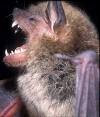BAT HOUSES FOR INTEGRATED PEST MANAGEMENT BENEFITS FOR BATS AND ORGANIC FARMER
A lot of this information for this article comes from this report by the “Bat Conservation International” of Austin Texas.
Bats are an amazing help to farmers and to folks who want to control the insect problems in their neck of the woods. Bats consume large quantities of insect pests, but many of these bat species are declining due to loss of roost sites. Farmers and other folks can help bats by providing new roosts in the form of bat houses while at the same time benefiting from bats pest reduction services.
Bathouses performed better on the sides of barns or garages rather than on poles. The occupancy rate was much higher on the sides of buildings.
More than half of the 45 species of bats living in the United States and Canada are either endangered or candidates for such status, and many that are considered abundant are declining rapidly. As the bird population was declining because of lack of nesting places, birdhouses of all sorts were used and the population of the declining birds started to rise according to a study by the University of Tennessee.
As was formerly the case with purple martins and bluebirds, roost loss was an important factor in decline. Millions of bats have been forced from caves and old growth forests by human activity. Some have been excluded from buildings and mine closures for safety reasons. Bats are NOT well equipped to handle these threats because they are the worlds slowest reproducing mammals for their size, and they form the largest and most vulnerable aggregations of and vertebrate.
This loss of bat habitats poses a particular problem to agriculture because the bat is the primary predator of vast number of pests that cost American farmers and foresters billions of dollars annually. For example the Mexican free-tail bats from central Texas alone consume approximately two million pounds of insects nightly.
Just as programs for bluebirds, wood ducks and purple martins have provided clear evidence that artificial roosts reverse population declines, so has the Bat House Research Project convincingly demonstrated that artificial roosts also work for bats. Recent studies show that the most common bat house occupants, big brown, little brown and free-tail bats, can be extremely beneficial to agriculture. An organic farmer in Oregon who attracted 600 little brown bats to bat houses reported elimination of a previously serious corn earworm problem. Not only do they consume pests, including corn earworm, armyworm and tobacco budworm moths, but their mere presence can have an effect on insects. It has been documented that moths listen for bat echolocation sounds and avoid areas within 150 feet of were they hear even one bat.
I am really liking the idea of bat houses around to eat the nightly mosquitoes especially as I like to BBQ at night and hate the feel and smell of insect repellents and half the time those don't work anyways.
MORE LATER
KenR





Great Idea.
ReplyDeleteI like to BBQ and would rather eat it without having to smell a bunch of nasty candles to keep bugs away.